By Toyin Falola
You cannot be in Ghana and not talk about “Galamsey,” pushing aside the popularity of such names as Nana, Kofi, and Kwame. When I told participants at the annual literary festival that I would write about it, I received a loud ovation. It is part of the conversation on the forthcoming presidential elections. University teachers are on strike to pressure the government to stop it. Be afraid of drinking mercury in water and eating fish. The water bodies are damaged. Galamsey is the new Ebola, as dangerous as COVID-19 before the vaccination. Galamsey is the vampire that sucks blood.
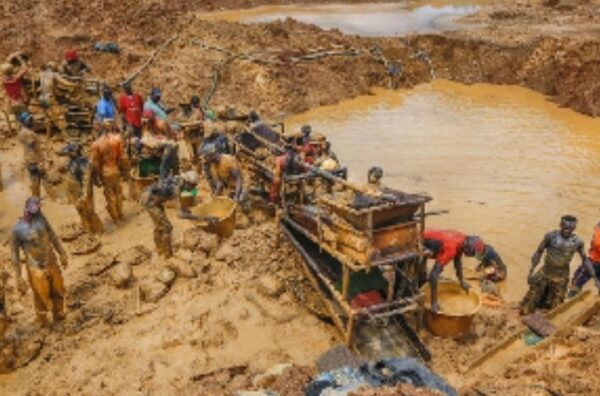
The term “galamsey” elicits in the mind implications of democratic access to Ghana’s troves of gold. Meaning “gather them and sell,” galamsey digging has been an essential part of conversations in the mining ecosystem of this West African nation. The informal mining sector, alternatively known as Artisanal Small-scale Mining (ASM), has operated for decades, providing livelihoods for thousands of people. However, its unregulated and chaotic nature has often led to severe environmental, health, and social consequences. The importance of addressing galamsey mining cannot be overstated, as its impact on Ghana’s environment, human health, and economy creates existential urgency, particularly for the ordinary Ghanaians who are the most affected.
To fully grasp the impact of this industry, it is essential first to understand how it operates. Galamsey mining refers to the artisanal small-scale mining of minerals, primarily gold, using rudimentary methods. These miners, often unauthorized and unlicensed, operate in remote areas, extracting minerals from shallow deposits. Over the years, this informal sector has grown significantly, with estimates suggesting that over one million artisanal small-scale miners operate in Ghana. Mining in the country dates back to the 19th century, with gold being the primary mineral extracted. The sector has experienced tremendous growth, positioning Ghana as Africa’s largest gold producer and the sixth-largest globally.
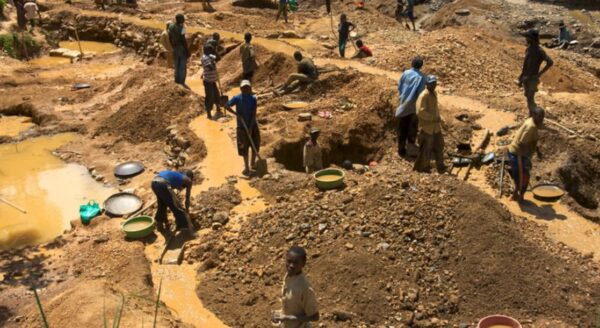
However, the artisanal small-scale mining sector, particularly galamsey, operates outside Ghana’s regulatory framework. This lack of regulation has led to severe environmental degradation, health hazards, and economic instability. The sector’s contribution to Ghana’s gold production is substantial, accounting for approximately 30% of the country’s gold output; however, the benefits of galamsey mining are heavily outweighed by its devastating consequences.
One of the most pressing concerns surrounding galamsey mining is its environmental impact. Mercury and other toxic chemicals in mining have led to widespread water pollution, deforestation, and soil contamination. This destruction of natural habitats and biodiversity severely impacts Ghana’s ecosystem. For instance, water pollution affects the miners and surrounding communities, posing a significant risk to human health. Also, destroying fertile land and forests has long-term consequences for Ghana’s agricultural sector and food security. In some cases, illegal miners have been reported to have forcefully taken over cocoa farmlands, contributing significantly to the Ghanaian economy, accounting for 10% of the country’s gross domestic product (GDP) and employing up to one million farmers.
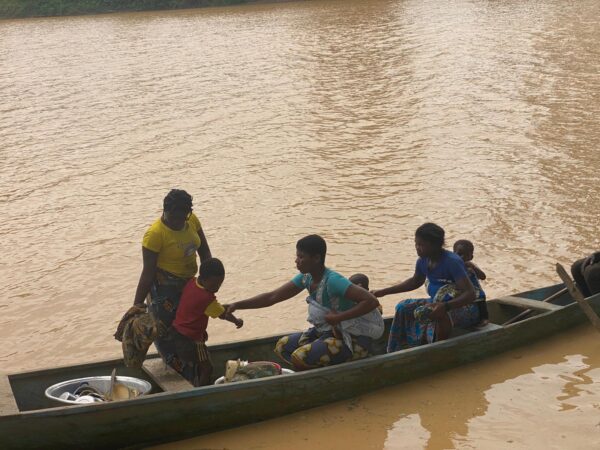
In addition to environmental concerns, galamsey mining poses serious health risks to miners and surrounding communities. The use of mercury and other toxic chemicals has led to increased cases of mercury poisoning, respiratory diseases, and other health issues. These risks are further exacerbated by the lack of proper safety equipment and training, resulting in frequent accidents and fatalities. Living conditions for miners are often deplorable, with inadequate access to healthcare, sanitation, and clean water. The methods used by these miners also leave large expanses of water coated in mud, making them unsuitable for consumption. Even more disturbing is the warning by some Ghanaian sources that the country may have to resort to water importation by 2030 if these harmful practices are not halted.
Mercury and other toxic chemicals in galamsey mining have contaminated Ghana’s water sources, including rivers, streams, and groundwater. Mercury, a potent neurotoxin, is linked to neurological disorders, congenital disabilities, and respiratory problems. Mercury exposure can portend significant implications for the kidneys, brain, lungs, skin, and gastrointestinal tract. Pollution from galamsey has affected several major rivers, including the Pra, Birim, and Ankobra. These rivers are vital sources of drinking water, irrigation, and domestic use for millions of Ghanaians, and their contamination poses a significant threat to the well-being of the people, particularly those in rural communities. For example, a study found that people living in communities near galamsey mining sites had higher levels of mercury in their blood and urine.
Galamsey mining has also led to widespread deforestation, with forests cleared to make way for mining activities. This destruction of natural habitats severely affects Ghana’s biodiversity, leading to the loss of endangered species and ecosystems. The removal of vegetation also increases soil erosion, landslides, and flooding. The country’s forest cover has declined significantly due to galamsey mining, with the forest reserve dropping from 8.2 million hectares in 1900 to approximately 1.6 million hectares today. This significant loss of forest cover undermines Ghana’s efforts to combat climate change. Similarly, deforestation affects local communities that rely on forests for their livelihoods, such as farming, hunting, and gathering. The destruction of forests disrupts traditional practices and cultural heritage, further intensifying social conflicts.
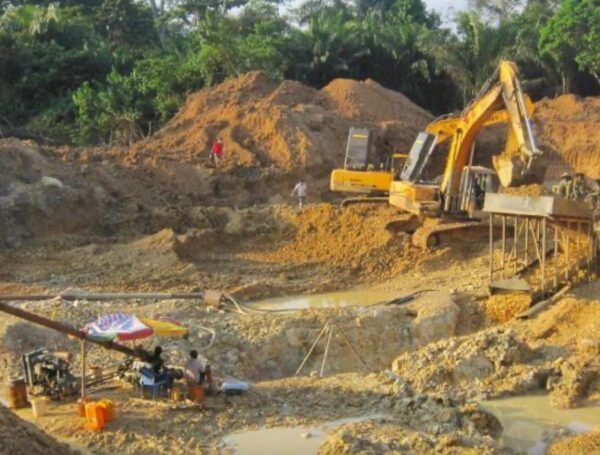
The harmful effects of chemical additives and heavy metals used in galamsey mining extend to the soil, which becomes contaminated. Invariably, long-term risks to agricultural productivity and food security are instituted. Soil pollution also affects human health, as toxic chemicals can be absorbed through skin contact or ingestion. Even worse is the likelihood that the pollution will last for decades, which paints a bleak picture for the agricultural sector and the food security it provides.
Compounding these issues is the air pollution caused by diesel generators and heavy machinery during mining operations. Releasing particulate matter, sulfur dioxide, and other pollutants contributes to respiratory problems and other health issues. Neither miners nor host communities are excluded from the respiratory risk associated with the excavation process. For miners, in particular, the occupational health hazards are severe, as they often lack proper safety equipment, training, and medical care, which increases the risks of accidents and injuries from machinery and explosives. Hearing loss and vibration syndrome, heat stress, dehydration, and others are frequently documented among the galamsey labor force.
The social implications of galamsey mining have equally proven to be alarming. The sector’s informal nature has led to the exploitation of vulnerable groups, including children and women. Child labor is prevalent in galamsey mining, with children as young as ten years old working in hazardous conditions that expose them to toxic chemicals. This contradicts the country’s minimum age requirement of 18 for licensed access to mining sites, as outlined in the Children’s Act. These children are denied access to education, which perpetuates the cycle of poverty. Relatedly, galamsey mining has led to the exploitation of vulnerable groups, particularly children and women. Women are disproportionately affected, often bearing the brunt of environmental degradation due to their primary responsibilities for household chores and childcare. The destruction of natural resources and the pollution of water sources increase their workload and expose them to significant health risks.
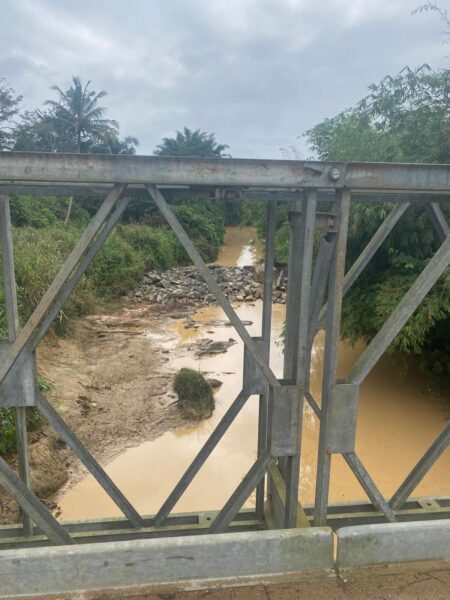
Additionally, the influx of miners into remote areas has led to social conflicts between residents and intruding miners. It continues to disrupt social structures and community dynamics in affected areas, leading to increased population density, strained local infrastructure, and resource shortages. The government and communities face immense economic losses, with approximately 85% of mining activities being unlicensed and unregulated. Galamsey mining operations often evade taxes and royalties, depriving the state of much-needed revenue while causing substantial harm. Furthermore, the environmental degradation caused by galamsey mining has profound economic implications. The destruction of natural resources, pollution of water sources, and loss of biodiversity undermine Ghana’s economic development. Critical to Ghana’s economy, the tourism and agriculture sectors are particularly vulnerable to such environmental degradation.
However, galamsey mining did not spring out of the shadows as it has a long history in Ghana, dating back to the pre-colonial era. The practice was initially tolerated by colonial authorities, who saw it as supplementing the country’s gold production. But with the passage of the Minerals Ordinance, galamsey mining became illegal. Despite this, the sector continued to thrive, driven by the demand for gold and the lack of economic opportunities in rural areas. Post-independence, the Ghanaian government attempted to formalize the small-scale mining sector by establishing the Small-Scale Mining Project (SSMP) in 1989. However, the project’s failure to provide adequate support and resources led to the proliferation of informal mining activities. The sector’s growth was further fueled by the surge in global gold prices in the 2000s, attracting thousands of artisanal miners to Ghana. Notably, many of these miners were Chinese, with around 50,000 nationals from China flocking to Ghana between 2008 and 2013.
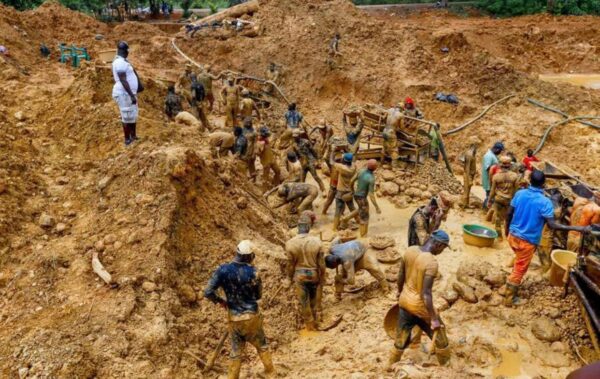
Unfortunately, the lack of effective regulation and enforcement has significantly contributed to the galamsey mining menace. Corruption, inadequate resources, and poor coordination among government agencies have hindered efforts to crack down on illegal mining activities. Also, the complexity of Ghana’s mining laws and regulations has created confusion among miners, leading many to operate outside the formal sector. The role of Chinese investors in Ghana’s galamsey mining sector has also been contentious. While the influx of Chinese miners, equipment, and expertise has increased the sector’s capacity and efficiency, allegations of environmental degradation, exploitation of local miners, and corruption have sparked tensions between Ghanaian authorities and the Chinese.
Critics argue that before the influx of foreign miners, galamsey was primarily a crude venture that relied on essential equipment and only achieved shallow excavation depths. However, the supply of heavier industrial earth-movers and organized commercial entities has taken it far beyond these levels. A symbolic pushback against the impacts of expatriate involvement in the sector is the trial and sentencing of En “Aisha” Huang, a Chinese national known as the “Galamsey Queen.” Huang had previously evaded serving a sentence when she was deported in 2017 after an arrest. Upon her return in 2022, she was tried and sentenced to four-and-a-half years in prison.
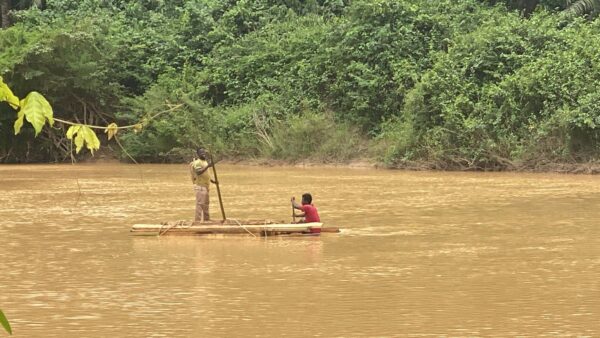
In recent years, the Ghanaian government has taken steps to address the galamsey mining issue. The establishment of the Minerals Commission in 1993 and the passage of the Minerals and Mining Act in 2006 were aimed to regulate the sector and promote environmental and social responsibility. However, implementation challenges and lack of resources have hindered the effectiveness of these initiatives. Factors such as intermingling private interests with public responsibility have hampered the government from making any serious progress. The overlap of laws and institutions makes the task arduous, as officials in regulatory agencies are reportedly appointed on partisan bases. Moreover, high-ranking state personalities are spared the brunt of litigation for their mining activities, which may undermine the strategies employed in various law enforcement clampdowns.
Considering the above, Ghana must implement a broad strategy to sanitize key institutions to reverse the corrosive impacts of galamsey mining. This ensures that regulatory frameworks are grounded in realistic cases, not merely theoretical. It is also necessary to streamline laws to facilitate more accessible access to licensing for artisanal miners, thereby expanding the cohort of taxpayers within the industry. On the dangers it poses, Ghana must provide alternative livelihoods for miners, invest in education and training programs, and promote sustainable mining practices. It should be noted that achieving these goals requires the cooperation of local communities. Through their input, the country can establish an effective monitoring network to understand the plights of the most affected stakeholders. The urgency of these actions cannot be overemphasized. Galamsey has transcended into a highly contentious national issue, provoking threats of actions from labor unions and engagement from even the clergy. Given the popularity of disaffection towards the effects of illegal gold mining, the Ghanaian state has only two options: act or act.
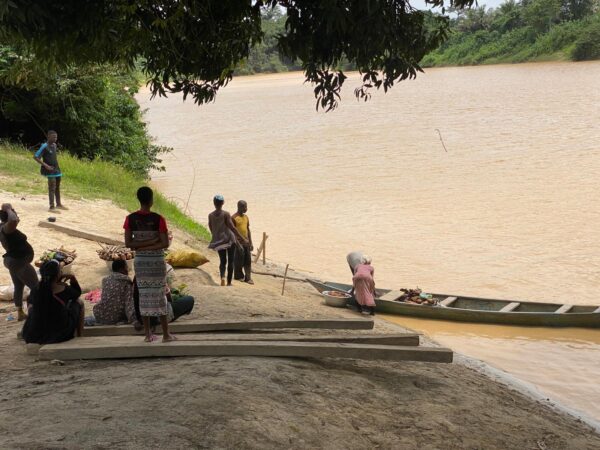
PS: I conversed with a broad segment of the Ghanaian population: chiefs, professors, students, and activists. Victor Angba, a PhD student at the University of Texas working on the Pra River, took some photos.
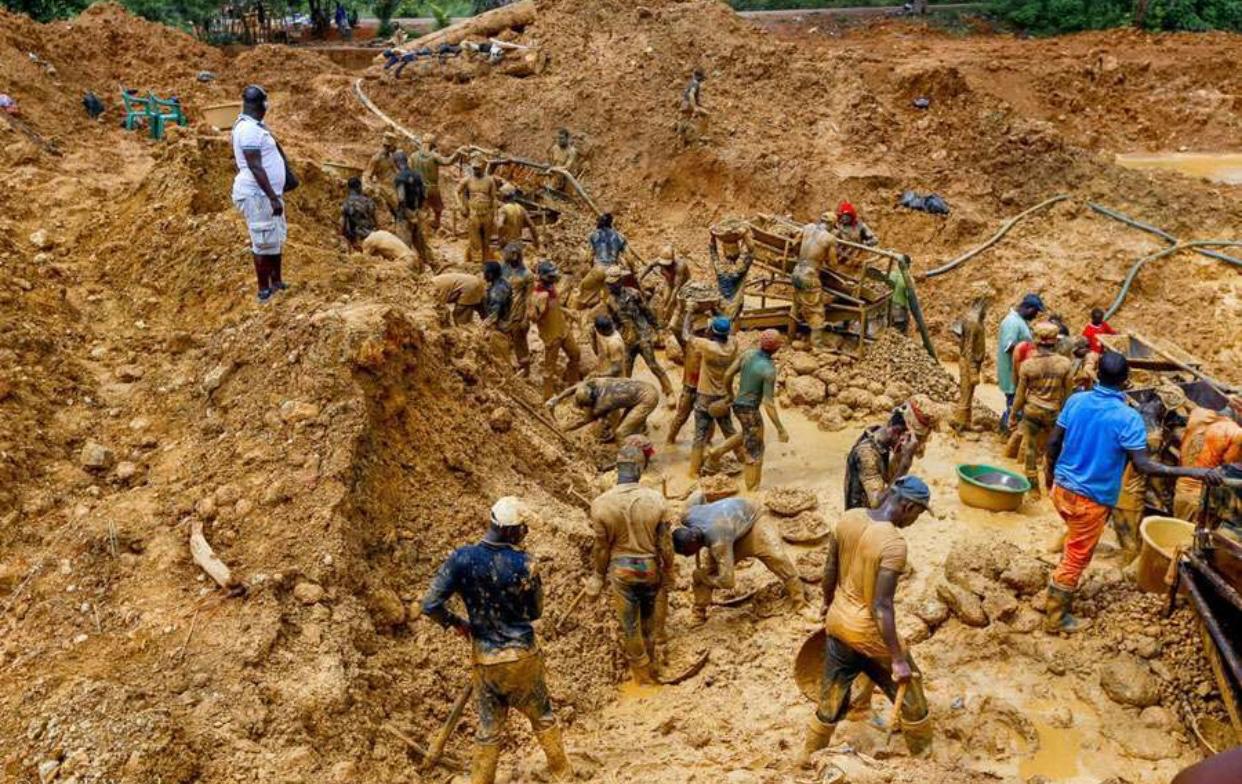
This is insightful.
A good read.
Thorough piece.
Kudos to The distinguished Prof
And Victor for this wonderful job.